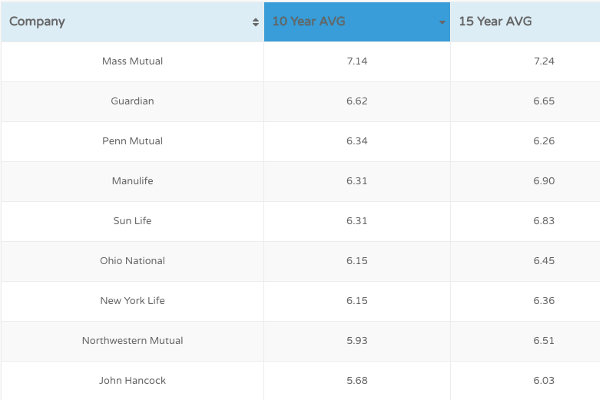Life insurance is an essential financial instrument that offers security and assurance to individuals and their loved ones. It ensures that loved ones are financially secure in the event of an untimely death. However, for individuals with pre-existing conditions, obtaining life insurance can be a challenging and expensive process. In this blog post, we will explore the cost of life insurance for individuals with pre-existing conditions and provide insights on how to navigate this complex landscape.
Insurance companies consider several factors when determining the cost of life insurance for individuals with pre-existing conditions. These factors include the severity of the condition, the individual's overall health, age, lifestyle choices, and the type of life insurance policy being applied for.
Understanding Pre-Existing Conditions
Before delving into the cost of life insurance for individuals with pre-existing conditions, it is important to understand what constitutes a pre-existing condition. A pre-existing condition refers to any health condition that an individual has prior to applying for life insurance coverage. This can include chronic illnesses, such as diabetes, heart disease, cancer, or any other medical condition that may impact life expectancy.Impact on Life Insurance Premiums
When it comes to life insurance, the presence of a pre-existing condition can significantly impact the cost of premiums. Insurance companies assess the risk associated with providing coverage to individuals with pre-existing conditions, and adjust the premiums accordingly. The higher the perceived risk, the higher the premiums.Insurance companies consider several factors when determining the cost of life insurance for individuals with pre-existing conditions. These factors include the severity of the condition, the individual's overall health, age, lifestyle choices, and the type of life insurance policy being applied for.
Types of Life Insurance Policies
There are two main types of life insurance policies: term life insurance and whole life insurance. The cost of life insurance for individuals with pre-existing conditions can vary depending on the type of policy chosen.- Term Life Insurance: Term life insurance provides coverage for a specific period, typically 10, 20, or 30 years. Premiums for term life insurance are generally lower compared to whole life insurance. However, individuals with pre-existing conditions may face higher premiums or even be denied coverage altogether.
- Whole Life Insurance: Whole life insurance provides lifelong coverage and includes a cash value component. Premiums for whole life insurance are typically higher than term life insurance, but they remain level throughout the life of the policy. Individuals with pre-existing conditions may find it more challenging to obtain whole life insurance and may face higher premiums due to the increased risk.
Secure your future today. Get covered now!
Click below to get a Quote Now!
Get Me A QuoteFactors Affecting the Cost of Life Insurance
Several factors influence the cost of life insurance for individuals with pre-existing conditions. It is essential to understand these factors to make informed decisions when seeking life insurance coverage.- Severity of the Condition: The severity of the pre-existing condition plays a significant role in determining the cost of life insurance. Conditions that are well-managed and under control may result in lower premiums compared to conditions that are more severe or have a higher risk of complications.
- Overall Health: Insurance companies consider an individual's overall health when assessing the risk associated with providing coverage. Factors such as BMI, blood pressure, cholesterol levels, and lifestyle choices (e.g., smoking, alcohol consumption) can impact the cost of premiums.
- Age: Age is a crucial factor in determining life insurance premiums. Generally, the younger an individual is when they apply for coverage, the lower the premiums. However, for individuals with pre-existing conditions, age may not have as significant an impact on premiums as the condition itself.
- Type of Condition: The specific pre-existing condition also influences the cost of life insurance. Some conditions may be considered higher risk, leading to higher premiums or potential denial of coverage. Others may have less impact on premiums, depending on the severity and management of the condition.
- Type of Policy: As mentioned earlier, the type of life insurance policy chosen can affect the cost of premiums. Whole life insurance tends to be more expensive than term life insurance due to its lifelong coverage and cash value component.
Navigating the Process
Obtaining life insurance with a pre-existing condition can be a complex and time-consuming process. However, there are steps individuals can take to navigate this process more effectively:- Work with an Experienced Agent: Partnering with an experienced life insurance agent who specializes in working with individuals with pre-existing conditions can be immensely helpful. They can guide you through the application process, provide insights on which insurance companies are more lenient towards certain conditions, and help you find the best coverage at the most competitive rates.
- Provide Detailed Medical Information: When applying for life insurance, it is crucial to provide accurate and detailed medical information. This includes information about the pre-existing condition, any treatments or medications, and any lifestyle changes made to manage the condition effectively. Providing comprehensive information can help insurance companies assess the risk more accurately and potentially result in lower premiums.
- Shop Around: It is essential to compare quotes from multiple insurance companies to find the most competitive rates. Each insurance company has its own underwriting guidelines and may assess pre-existing conditions differently, leading to varying premiums. By shopping around, you can find the insurance company that offers the best coverage and rates for your specific pre-existing condition.
- Consider Group Life Insurance: If you are employed, check if your employer offers group life insurance coverage. Group life insurance policies often have more lenient underwriting guidelines and may provide coverage for individuals with pre-existing conditions at more affordable rates.
- Improve Your Health: Taking steps to improve your overall health can positively impact the cost of life insurance. This includes maintaining a healthy lifestyle, managing your pre-existing condition effectively, and following your healthcare provider's recommendations. Insurance companies may offer lower premiums to individuals who demonstrate a commitment to their health.




